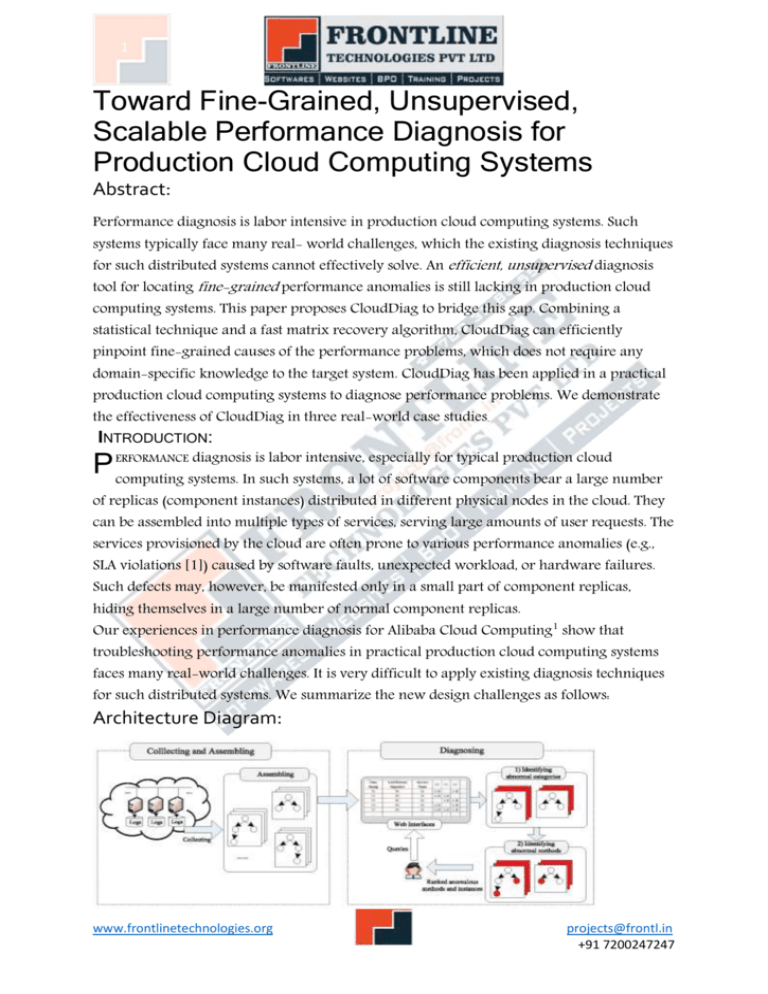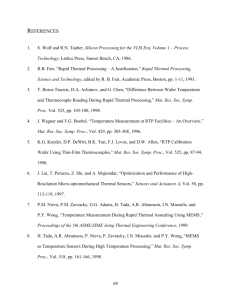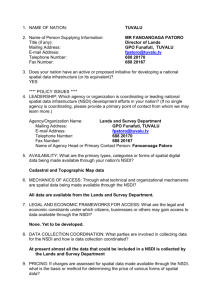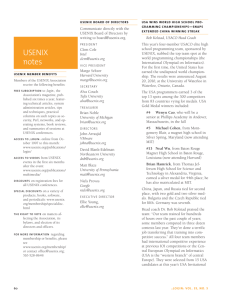Toward Fine-Grained, Unsupervised, Scalable Performance
advertisement

1 Toward Fine-Grained, Unsupervised, Scalable Performance Diagnosis for Production Cloud Computing Systems Abstract: Performance diagnosis is labor intensive in production cloud computing systems. Such systems typically face many real- world challenges, which the existing diagnosis techniques for such distributed systems cannot effectively solve. An efficient, unsupervised diagnosis tool for locating fine-grained performance anomalies is still lacking in production cloud computing systems. This paper proposes CloudDiag to bridge this gap. Combining a statistical technique and a fast matrix recovery algorithm, CloudDiag can efficiently pinpoint fine-grained causes of the performance problems, which does not require any domain-specific knowledge to the target system. CloudDiag has been applied in a practical production cloud computing systems to diagnose performance problems. We demonstrate the effectiveness of CloudDiag in three real-world case studies. INTRODUCTION: diagnosis is labor intensive, especially for typical production cloud P computing systems. In such systems, a lot of software components bear a large number ERFORMANCE of replicas (component instances) distributed in different physical nodes in the cloud. They can be assembled into multiple types of services, serving large amounts of user requests. The services provisioned by the cloud are often prone to various performance anomalies (e.g., SLA violations [1]) caused by software faults, unexpected workload, or hardware failures. Such defects may, however, be manifested only in a small part of component replicas, hiding themselves in a large number of normal component replicas. Our experiences in performance diagnosis for Alibaba Cloud Computing1 show that troubleshooting performance anomalies in practical production cloud computing systems faces many real-world challenges. It is very difficult to apply existing diagnosis techniques for such distributed systems. We summarize the new design challenges as follows: Architecture Diagram: www.frontlinetechnologies.org projects@frontl.in +91 7200247247 2 CONCLUSION: Request tracing technologies have been proven effective in performance debugging. In this paper, CloudDiag resorts to a white-box instrumentation mechanism to trace service requests, because the source codes of services are generally available in typical production cloud systems. Note that such a white-box performance data acquisition component of CloudDiag can also be substituted with another tracing mechanism if it can obtain the latency data of method invocations. References: 1. V. Emeakaroha, M. Netto, R. Calheiros, I. Brandic, R. Buyya, and C. De Rose, "Towards Autonomic Detection of SLA Violations in Cloud Infrastructures," Future Generation Computer Systems, vol. 28, pp. 1017-1029, 2011. 2. Z. Lan, Z. Zheng, and Y. Li, "Toward Automated Anomaly Identification in Large- Scale Systems," IEEE Trans. Parallel and Distributed Systems, vol. 21, no. 2, pp. 174187, Feb. 2010. 3. H. Malik, B. Adams, and A. Hassan, "Pinpointing the Subsystems Responsible for the Performance Deviations in a Load Test," Proc. IEEE 21st Int'l Symp. Software Reliability Eng. (ISSRE), pp. 201-210, 2010. 4. P. Reynolds, C. Killian, J. Wiener, J. Mogul, M. Shah, and A. Vahdat, "Pip: Detecting the Unexpected in Distributed Systems," Proc. USENIX Third Symp. Networked Systems Design and Implementation (NSDI), pp. 115-128, 2006. 5. E. Thereska and G. Ganger, "Ironmodel: Robust Performance Models in the Wild," ACM SIGMETRICS Performance Evaluation Rev., vol. 36, no. 1, pp. 253-264, 2008. 6. E. Thereska, B. Salmon, J. Strunk, M. Wachs, M. Abd-El-Malek, J. Lopez, and G. Ganger, "Stardust: Tracking Activity in a Distributed Storage System," ACM SIGMETRICS Performance Evaluation Rev., vol. 34, no. 1, pp. 3-14, 2006. 7. R. Sambasivan, A. Zheng, M. De Rosa, E. Krevat, S. Whitman, M. Stroucken, W. Wang, L. Xu, and G. Ganger, "Diagnosing Performance Changes by Comparing Request Flows," Proc. USENIX Eighth Symp. Networked Systems Design and Implementation (NSDI), pp. 43-56, 2011. 8. A. Chanda, A. Cox, and W. Zwaenepoel, "Whodunit: Transactional Profiling For Multi-Tier Applications," ACM SIGOPS Operating Systems Rev., vol. 41, no. 3, pp. 17-30, 2007. 9. R. Fonseca, G. Porter, R. Katz, S. Shenker, and I. Stoica, "X-Trace: A Pervasive Network Tracing Framework," Proc. USENIX Third Symp. Networked Systems Design and Implementation (NSDI), pp. 271-284, 2007. www.frontlinetechnologies.org projects@frontl.in +91 7200247247 3 10. M. Chen, A. Accardi, E. Kiciman, J. Lloyd, D. Patterson, A. Fox, and E. Brewer, "PathBased Faliure and Evolution Management," Proc. USENIX Symp. Networked Systems Design and Implementation (NSDI), pp. 23-36, 2004. www.frontlinetechnologies.org projects@frontl.in +91 7200247247










